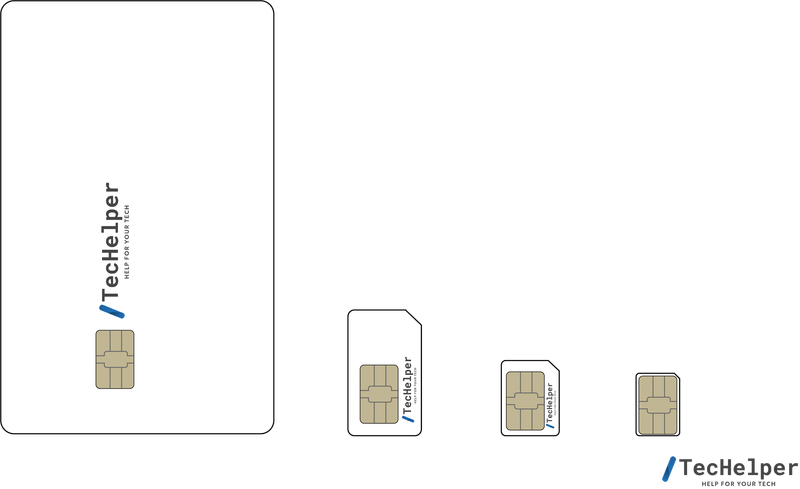A SIM card, which stands for Subscriber Identification Module card, is a type of chip that contains information to connect to a cellular network, such as the IMSI, as well as other information that can help identify you to the phone carrier. SIM cards are usually removable and replaceable, and while some may be embedded, they can usually be accessed from the side of the phone or on the back of the device.
A SIM card, embedded or otherwise, is required for a device to connect and use a carrier’s network.
SIM Card Sizes
Ever since it’s introduction in 1991, newer sizes of SIM cards have been introduced, each time shrinking in size.

Full Size SIM
The original, credit card-sized SIM Card is sometimes mistaken as an EMV chip for a credit card. Originally introduced in 1991, the full-size SIM card is not used as commonly as the other SIM card sizes.
Mini SIM
Introduced in 1996, five years after the original, full size SIM card, the mini SIM card is now sometimes incorrectly referred to as the full size SIM. It is significantly smaller than the full size SIM card.
Micro SIM
The micro SIM card was introduced in 2003.
Nano SIM
Introduced in 2012, the nano SIM card is currently the newest and smallest SIM card. It is used in almost all recent mobile devices.












